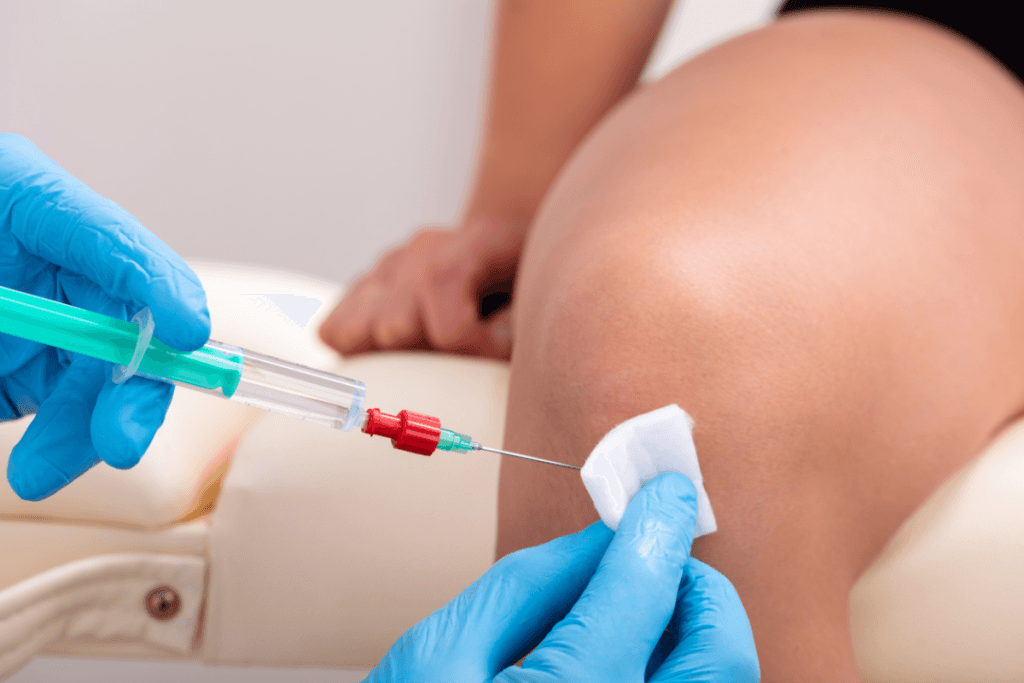Osteoarthritis (OA) affects millions globally, often causing pain, stiffness, and restricted mobility that impacts daily life. As medical practitioners, understanding the latest and most effective treatment options for OA is crucial.
Hyalgan, a hyaluronic acid injection, has emerged as a practical option for patients seeking non-surgical solutions for knee osteoarthritis. By restoring lubrication in the knee joint, Hyalgan alleviates pain and enhances joint function and quality of life for patients. This article delves into Hyalgan’s therapeutic benefits, its role in pain management, and best practices for practitioners in administering hyaluronic acid injections to patients with osteoarthritis.
Understanding Hyalgan: How It Works and Why It’s Effective
Hyalgan is a hyaluronic acid-based injection administered directly into the knee joint, which supplements the joint’s natural synovial fluid. Hyaluronic acid (HA) is a naturally occurring substance that helps lubricate and cushion joints. In patients with osteoarthritis, this vital fluid diminishes in quality and quantity, leading to increased friction, pain, and inflammation. Administering a Hyalgan injection introduces additional HA, helping to restore lubrication and absorb impact within the joint.
This supplementation with Hyalgan relieves the joint, reducing symptoms and enhancing mobility. For practitioners, the ability to offer this non-surgical treatment provides patients with a safe and minimally invasive alternative that can delay or reduce the need for surgery.
Critical Benefits of Hyalgan Injections
Hyalgan injections provide several benefits for knee osteoarthritis patients:
- Pain Relief: Hyalgan helps alleviate the pain associated with osteoarthritis by reducing friction within the joint. This improvement can allow patients to return to daily activities with increased comfort.
- Improved Mobility: The additional lubrication and cushioning offered by Hyalgan result in better joint movement, which enhances overall functionality.
- Non-Surgical Option: Many patients seek alternatives to knee surgery. Hyalgan knee injections offer a non-invasive treatment option with minimal downtime.
- Long-Lasting Relief: Depending on individual factors, patients can experience symptom relief for up to six months, making it a valuable choice for those seeking sustained relief.
The Protocol for Administering Hyalgan
The standard Hyalgan regimen involves a series of five weekly injections into the knee joint. Each injection is administered by a trained healthcare professional, ideally in a sterile clinical environment, to minimize the risk of infection. Patients typically require no sedation, and the procedure takes approximately 15 minutes. However, practitioners need to educate patients on the procedure, including preparation and aftercare, to optimize outcomes and reduce anxiety.
During the consultation, patients should be informed about the potential benefits, the procedure itself, and what they can expect regarding relief. Depending on their specific needs and treatment responses, some patients may require fewer injections, so personalization is critical.
Expected Timeframe for Relief with Hyalgan
The effects of Hyalgan may vary from patient to patient, with some experiencing relief as early as a few days after the initial injection. However, full benefits are generally realized within 8-12 weeks, with symptom relief often lasting up to six months. Regular follow-up appointments are essential for assessing the effectiveness of the treatment and determining if additional injections or alternative therapies are needed.
Possible Side Effects of Hyalgan Injections
Although generally well-tolerated, Hyalgan may produce mild side effects. Patients may experience pain, swelling, or redness at the injection site, which typically resolves within a day or two. Other side effects, such as bruising, stiffness, or slight discomfort, are common but generally manageable. It’s essential to educate patients on these potential side effects of Hyalgan injections so they are prepared and understand when to seek medical advice.
Serious side effects are rare but can include joint infection or severe allergic reactions, especially in patients with avian protein allergies, as Hyalgan is derived from rooster combs. Practitioners should discuss these risks thoroughly before treatment, and monitoring for any signs of infection or unusual swelling post-injection is recommended.
Comparing Hyalgan with Other Hyaluronic Acid Injections
Hyalgan is one of several hyaluronic acid-based treatments available for osteoarthritis. Other brands, like Synvisc, Orthovisc, and Euflexxa, offer similar benefits but differ in viscosity, duration of action, or formulation source. The choice between these treatments often depends on the practitioner’s preference and the patient’s response to previous treatments. For patients interested in comparing these options or looking for more affordable solutions, practitioners can provide guidance on where to buy Hyalgan online or in clinics.
The price of Hyalgan can vary widely depending on factors such as the provider, location, and a patient’s insurance coverage. Some insurance plans may cover part or all of the treatment, significantly reducing patient expenses. Additionally, options like patient assistance programs and discount cards may help lower the out-of-pocket cost of Hyalgan for eligible patients. For those looking to manage costs further, it may be worth comparing prices at different pharmacies or exploring reputable online sources under the guidance of a healthcare provider.
Optimizing Outcomes with Hyalgan Therapy
To maximize Hyalgan’s benefits, combining the injections with lifestyle modifications is essential. Encouraging patients to maintain a healthy weight, engage in low-impact exercises, and avoid high-stress activities on the knees can prolong the effectiveness of Hyalgan shots in knees. For patients who require more comprehensive support, physical therapy can complement Hyalgan by strengthening the surrounding muscles and improving joint stability.
Regular check-ins with patients are also beneficial for evaluating their progress and adjusting treatment plans if necessary. In some cases, combining Hyalgan with other treatments, such as corticosteroid injections or alternative hyaluronic acid brands, may be appropriate for achieving the best results.
Conclusion
Hyalgan injections offer a practical and non-invasive solution for managing knee osteoarthritis, relieving pain, and enhancing patient mobility. By understanding the benefits, administration protocol, and potential Hyalgan side effects and contraindications, healthcare providers can better support their patients’ joint health and improve their quality of life.
For those seeking alternatives to invasive surgery, Hyalgan provides a practical pathway toward pain-free movement and greater joint functionality. Through patient education and personalized care, practitioners can optimize the therapeutic benefits of Hyalgan knee injections for long-lasting relief.
Frequently Asked Questions (FAQs)
How long does it take for Hyalgan injections to work?
Most patients feel relief within a few injections, with full benefits typically appearing within eight to twelve weeks.
What are the main side effects of Hyalgan injections?
Common side effects include mild pain, swelling, or redness at the injection site. Serious side effects, such as joint infection, are rare but possible.
How much does Hyalgan cost?
The Hyalgan injection cost varies depending on the provider, insurance coverage, and location. Patients should check with their insurance provider for exact pricing details.
Can I buy Hyalgan online?
Yes, some licensed pharmacies offer Hyalgan online. Patients should ensure they purchase from reputable sources and consult their healthcare provider before purchasing.
Are there alternatives to Hyalgan for knee osteoarthritis?
Other hyaluronic acid injections, such as Synvisc and Euflexxa, offer similar benefits. Discussing these options with a healthcare provider can help determine the best choice for each patient.







